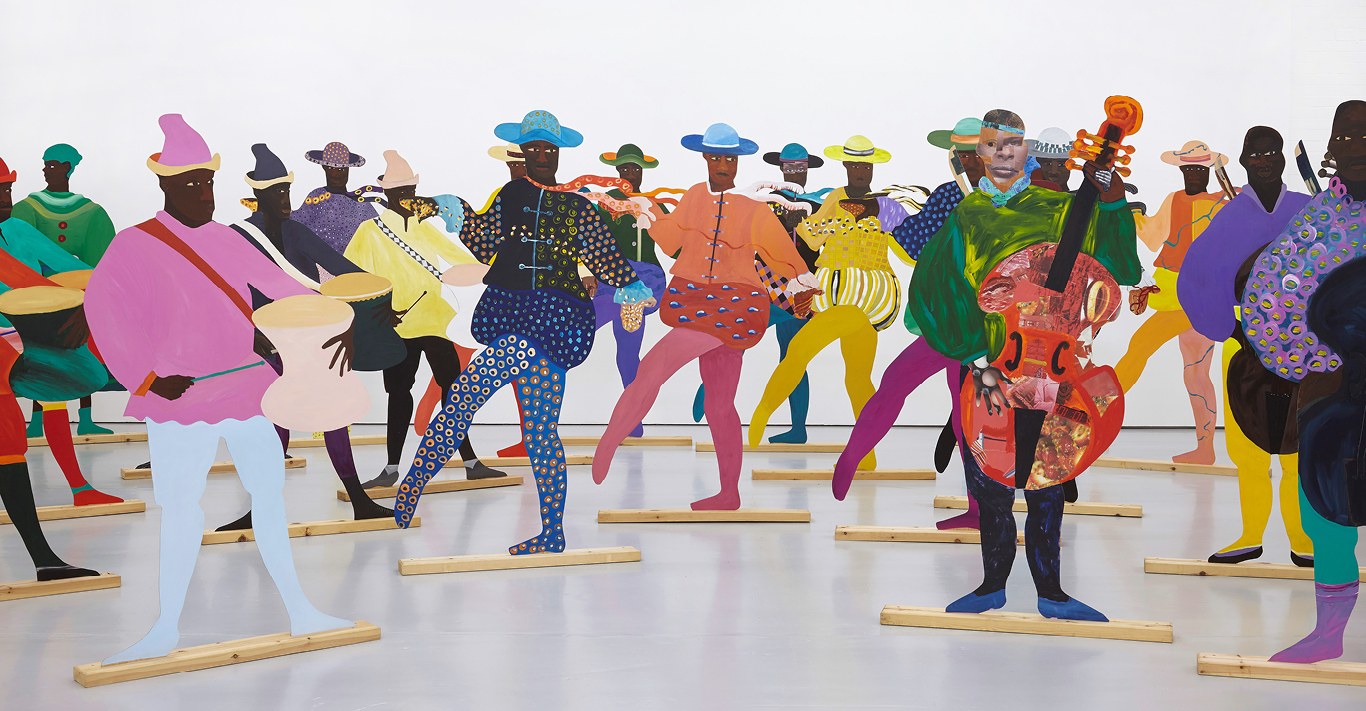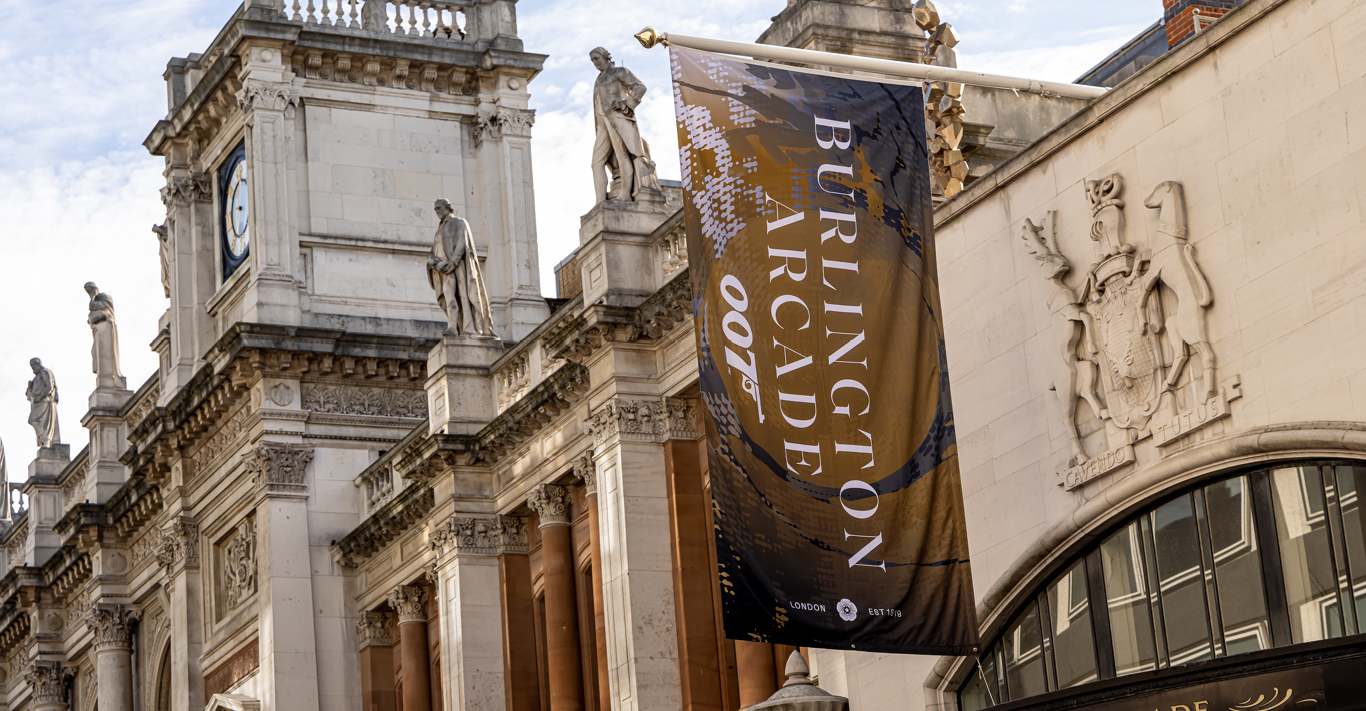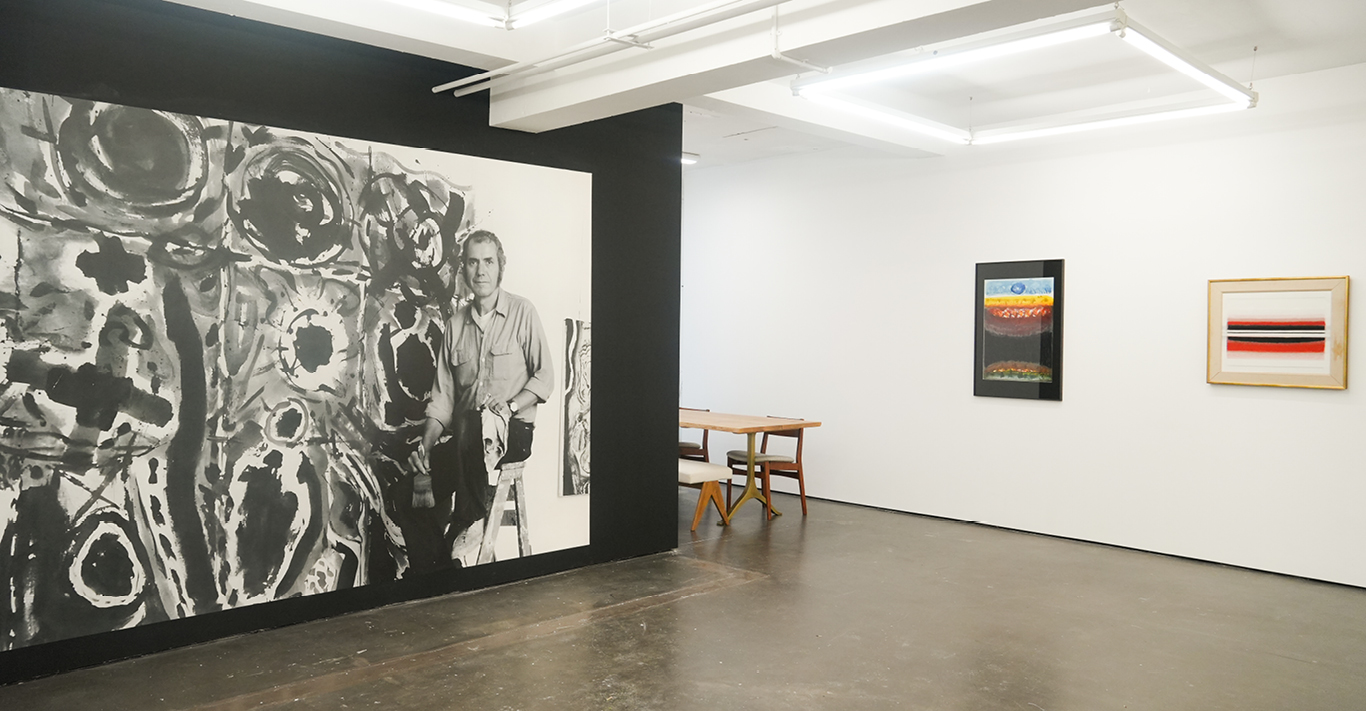WORDS
Jago Henderson
For over a decade and a half, eight busts, representing several Renaissance artists and art history titans including Leonardo da Vinci and Raphael, have stood above visitors to the Central Hall in the Royal Academy’s Main Galleries. However, during the Academy’s momentous new show Entangled Pasts, 1768-now, Art, Colonialism and Change mirrors obstruct these busts from view and we are instead met with our reflection. This symbolic gesture marks the beginning of a self-effacing exhibition dedicated to exploring connections between art associated with the Royal Academy and Britain’s colonial histories.
Entangled Pasts effectively explores the many ways that colonialism has become synonymous with the art institution’s history. The exhibition points out how the study of anatomy, which was a key component of training at the RA schools in the 19th century, relied heavily on notions of human difference characteristic of racial hierarchy. Several portraits of Jamaican-British model Fanny Eaton are featured, including Albert Joseph Moore’s The Mother of Sisera. Eaton began posing for the Academy in the late 1850s and was considered a muse to the virtually all-white Academy. Her mixed racial heritage meant she became a stock in trade for any and all non-white figures in biblical and mythological scenes.
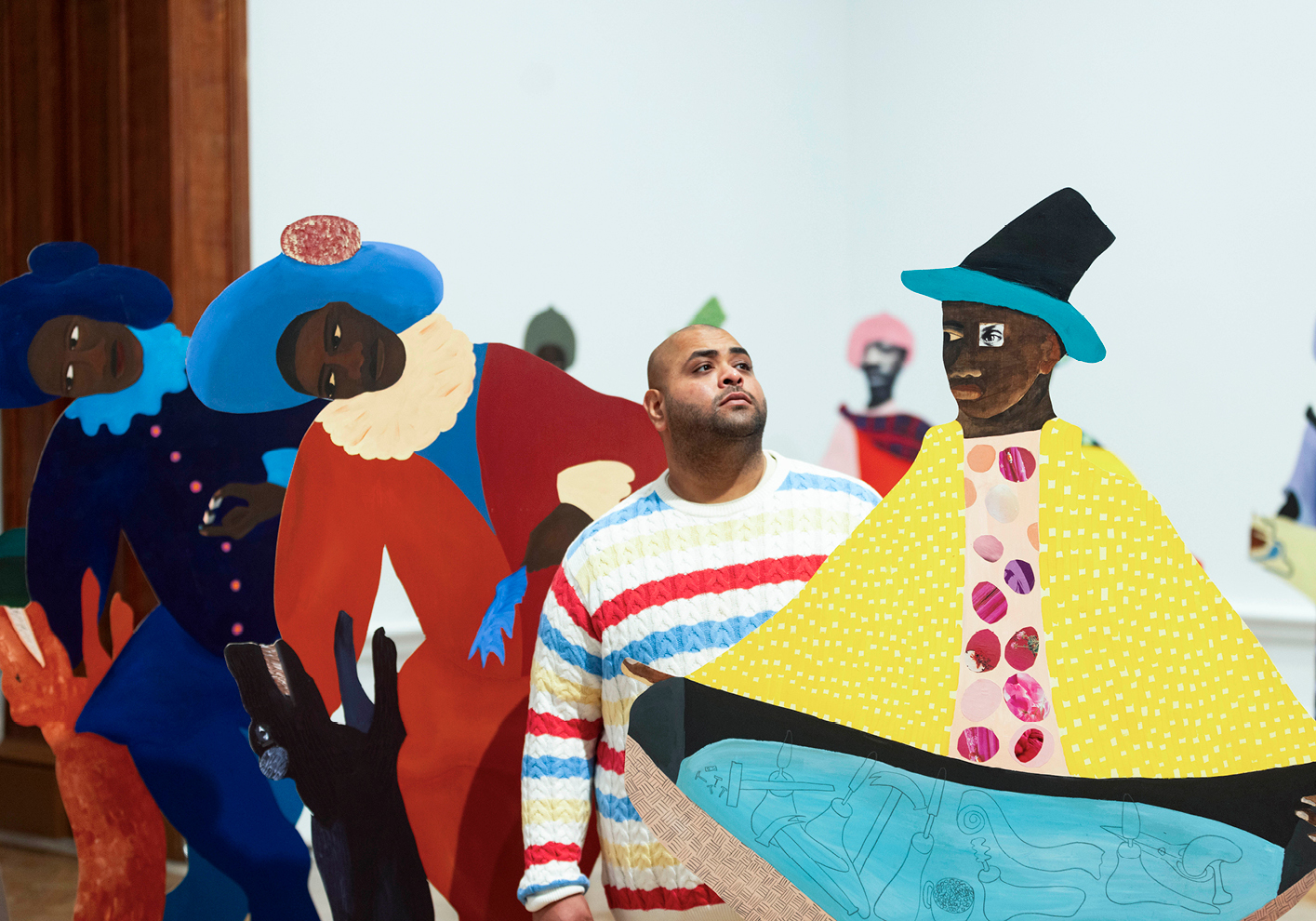
The juxtaposition of 18th and 19th-century artworks with contemporary pieces by British artists from African, Caribbean and South Asian diasporas is compelling. Yinka Shonibare’s 2023 sculpture Woman Moving Up stands out as a poignant commentary on diasporic mobility. A figure appears to be bending over, carrying suitcases up a section of a grand staircase. Her diasporic identity is suggested in the materiality of her clothing (Shonibare employs his signature use of Dutch wax fabric) and the hand-painted globe in place of a head. Shonibare has cited this work as a response to the Great Migration – the decades-long exodus of six million Black Americans from the rural South to cities in northern, midwestern and western states. Shonibare’s portrayal of movement and becoming, answers back to the Othering of people of colour exemplified in the portraits of Fanny Eaton.
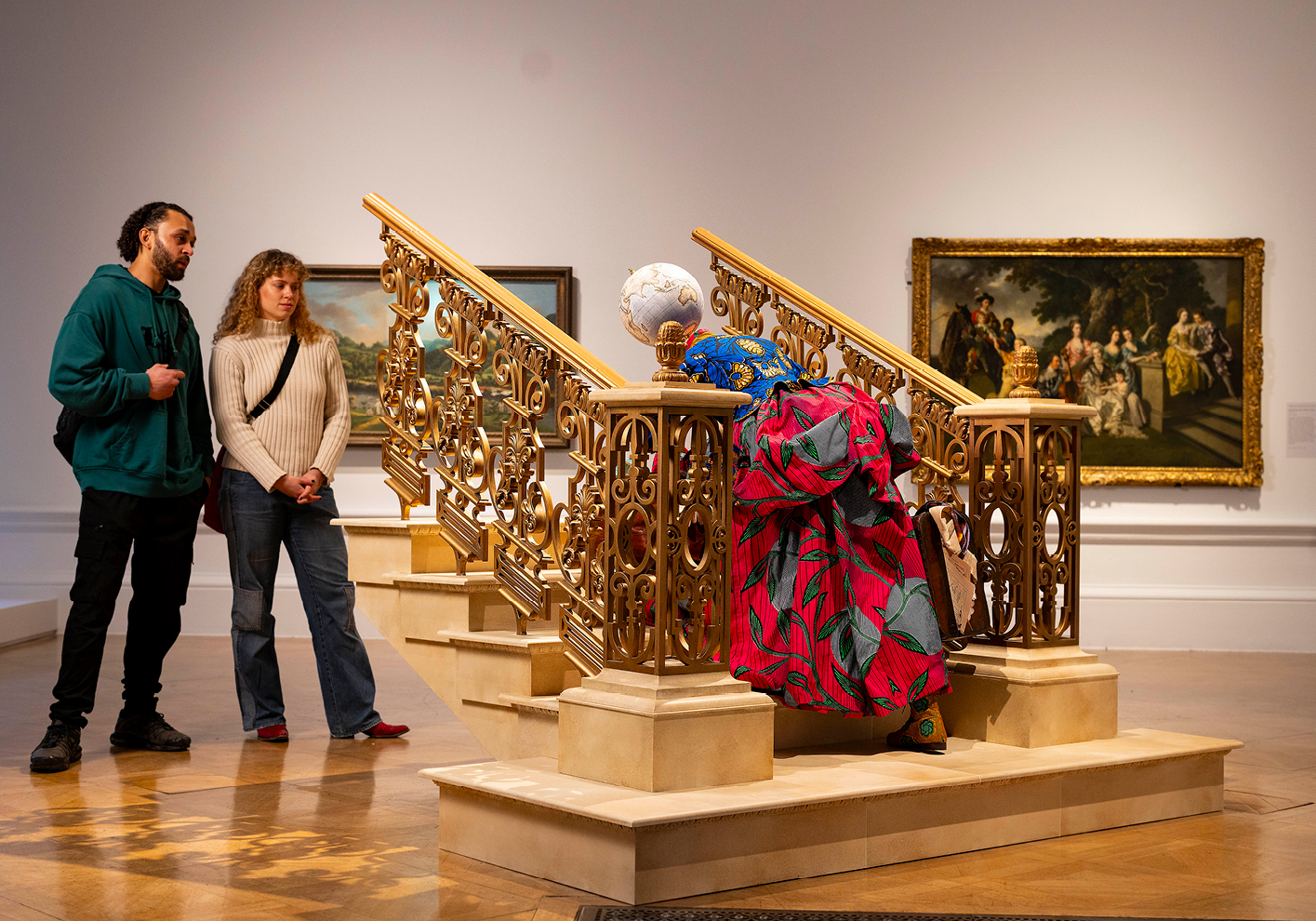
Sprawling across two rooms, Lubaina Himid’s Turner Prize-winning mixed media installation Naming the Money offers a poignant and moving closing ceremony to the exhibition. The visual splendour of the work is undeniable as 100 life-size cut-out figures appear, adorned in brightly coloured and uniquely patterned clothing. The sense of joy and celebration is complicated by the soundtrack which accompanies the work, featuring the voices belonging to the figures who tell their story in poetic form. One reads:
My name is Adom
They call me Dan
I used to drum with my brothers
Now I play alone
But I have their rhythms
A sense of a reconciliation between past and present defines each narrative as Himid explains: the work responds to ‘the dilemma of losing your name, being relieved of your real identity, being saddled with another… and how you then have to invent something else equally real… to make sense of being alive’. By individualising this shared experience, naming each figure and bestowing it with a history and narrative, Himid has created a powerful ode to human resilience, community and creativity.
Entangled Pasts is a compelling addition to ongoing discussions about the role of art institutions and the legacies of British colonialism. By untangling the Academy’s complex history, the exhibition prompts viewers to confront their reflections and acknowledge their responsibility in addressing colonial injustices today.
Entangled Pasts, 1768-now, Art, Colonialism and Change runs until 28 April at The Royal Academy of Art; royalacademy.org.uk


